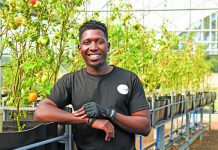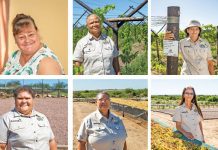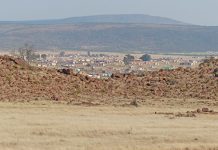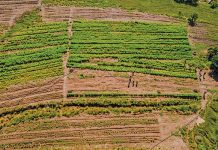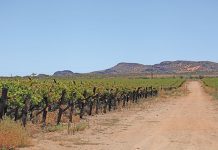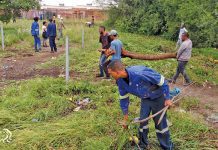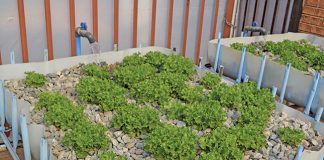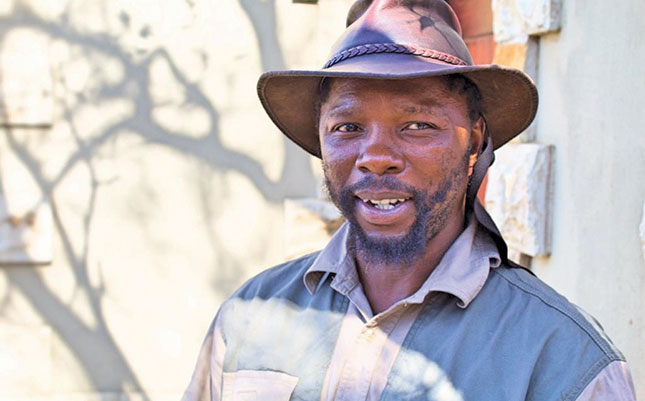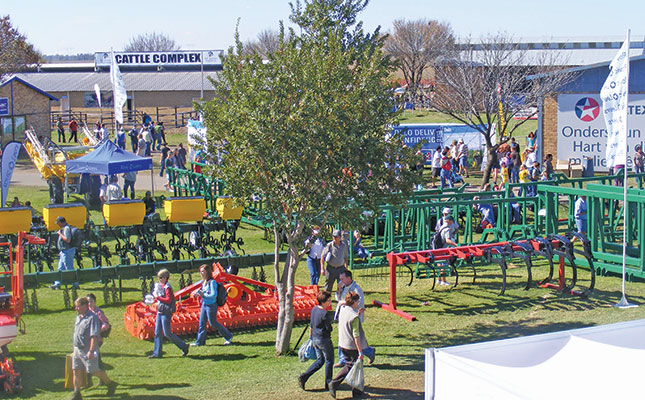
Photo: FW Archive
The very first Nampo Harvest Day, then called the Sampi Harvest Day, took place on 7 and 8 June 1967 on the farm Donkerhoek in the Bloemfontein district.
Two hundred farmers attended the 1967 event. The current event is owned and hosted by Grain SA. While its format may have changed over the past few decades, the harvest day’s objective has stayed the same, says Toit Wessels, Grain SA’s assistant manager for marketing and Nampo.
“Nampo aims to bring together agricultural suppliers and producers,” he explains.
According to Dr Dirk Strydom, research lead at Nampo, agricultural producers and the public will be able to experience the full spectrum of modern agriculture in 2022 as the event will, for the first time, take place over a period of five days.
He says the 54th Nampo Harvest Day offers a unique opportunity for producers to explore the latest technology and productivity solutions on the market. Nampo doesn’t only present an opportunity for conversation and dialogue, but also allows the public and other role players to experience commercial agriculture and see food safety and security in action, he adds.
READ Nampo survival guide
Due to COVID-19 pandemic restrictions, Nampo was not held via face-to-face contact in 2020 or 2021. The show’s absence was certainly felt across the agriculture sector, says Dr Pieter Taljaard, Grain SA CEO.
“To host government representatives and stakeholders from the agricultural value chain provides the opportunity for important and sometimes challenging conversations to take place, in an environment conducive to and aimed at promoting the sector locally and throughout the sub-Saharan Africa region.”
The first event
Nampo 2022 is a far cry from the first event in 1967. The Friend newspaper reported on 9 June 1967 that “the rain-soaked lands of Mr JD van Wyk, 18 miles from Bloemfontein on the Saltpan road, made an ideal proving ground for the tractors and implements demonstrated at a two-day mealie farmers’ symposium organised by the South African Maize Producers’ Institute (Sampi).
The demonstrations were attended by more than 200 farmers from all the major mealie-producing areas in the Free State and Western Transvaal.”
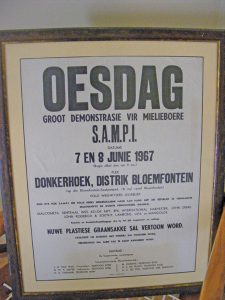
Since then, Nampo’s significance on the agricultural calendar has grown exponentially. In 2019, the last time it was held in a face-to-face format, around 800 exhibitors and 81 000 visitors came to the show over a four-day period. This makes Nampo South Africa’s biggest agricultural networking opportunity, with leading role players present at the event.
Nampo also provides an opportunity to strengthen friendships and relationships within the industry. Non-farmers or those not in the industry get a chance to experience the close-knit community of farmers and role players, according to Danie Minnaar, chairperson of Nampo.
The Friend reported in 1967: “According to one farmer, the demonstrations by tractor and implement dealers in the field were of greater value than the displays at [other] agricultural shows, as farmers had the opportunity to evaluate the equipment, and where more than one brand of equipment was shown, they could judge which would be the most suitable for their farming conditions.”
READ Agri shows to return to local calendar this year
A decision was taken early in the 1970s to organise additional harvest days in Ottosdal and Standerton. The 1971 Free State Harvest Day was held on Moos Haddad’s farm Hopefield in the Bloemfontein district.
Exhibition and demonstration areas in the maize lands cost R50 (about R3 854, adjusted for inflation) apiece during this time, while an exhibition space on the terrain was available at R22 (R1 696). The archives show that in that year, food suppliers showed a profit of R700 (R53 954).
It was decided in the early 1970s to create one central harvest day venue to make it accessible to as many farmers as possible. The farm Marthaville near Bothaville was duly bought in 1974, as the majority of maize farmers were within a 160km radius of the town at the time, and the tarred road between Klerksdorp and Bothaville afforded easy access to the showgrounds.
Maize farmers’ victory
The history of Nampo is part of South African maize farmers’ struggle for independence. It took a 14-year-long battle for maize producers to gain autonomy over their own industry.
Crawford von Abo of Bothaville told Farmer’s Weekly a few years ago that he was one of the initial organisers and leaders of the movement against the then maize regime.
“Maize farmers had no proper representation on the Maize Board in the 1950s and 1960s. This was nonsensical. A group of us from Bothaville – Fanie Ferreira, Hennie Delport, Hennie de Jager, Giep Nel and I – were the initial driving force to bring about change in the mid-60s,” Von Abo said.
A mass meeting attended by 4 000 maize producers was followed by a meeting in Klerksdorp where Sampi was properly constituted.
“And then the fight was on,” Von Abo chuckled. “This was a no-holds-barred battle against the government and the Afrikaner Broederbond. We remained firm in our objective to get control over our own industry. The late Ferreira became our spokesperson and eventual chairperson.
“More than 80% of the maize producers eventually supported Sampi. The amalgamation of Sampi and its opposition, the South African Maize Speciality Organisation (Samso), led to the formation of the National Maize Producers’ Organisation (Nampo) on 3 October 1980.
Through Sampi, maize producers took control of the Maize Board and, in effect, control of their own industry.

